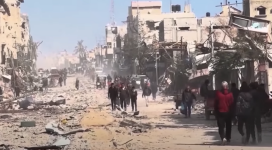World Vision (WV) reported that 1,000 families have received winterized tents, cooking sets, blankets, and tarpaulins in the North West Frontier Province.
WV Relief Zone Manager Judy Moore said, "Despite tremendous logistical challenges, we are getting relief to the quake-hit families we targeted for phase one of our operation."
The operation is to reach 15,000 families in a race against the approaching winter that is forecasted to hit in about two weeks.
Although, logistical challenges include, "driving tuck-loads of materials on damaged roads, transferring materials from large to small trucks in order to get them to villages high up on the mountainsides, and in some cases using human porters to get the heavy tents up to areas inaccessible by vehicle," WV said on Oct. 31.
Some of the inaccessible areas include the remote mountainous region, where the earthquake response is the most needed before the winter approaches.
"The worst part is yet to come. This disaster is going to be with us for months," Dineen Tupa from WV Central Asia said. "The world does not understand this tragedy."
"This disaster is more awful than the tsunami because of the cold weather and because access is a major obstacle," she added.
In the months to come, Tupa said that aid agencies will be working to find every means possible to bring food and shelter kits to camps and mountain peaks.
"This is not simply about the next two or three weeks. We are in this for the long haul." Said Tupa.
The United Nations emphasized the scope of the earthquake at a conference that brought world leaders, representatives from relief organizations and international donors to Geneva on Wed.
At the conference, the UN increased its plea for aid from $313 million to $550 million, as the Secretary-General Kofi Annan urged immediate assistance to the earthquake relief effort.
WV is planning to work together with the UN World Food Program by implementing a system where they can distribute blankets and feed a targeted group of 70,000 people over the next six months.
According to the Pakistan Meteorological Department, 1095 aftershocks have occurred since Oct. 8, when the earthquake devastated the lives of thousands of people and killed over 57,000, a number that is still being counted.







